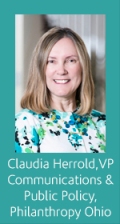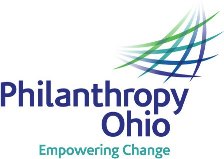Posts filed under ‘Management’
5 practices to change philanthropy from the outside-in
 Paul Shoemaker, executive connector at Social Venture Partners (SVP) Seattle, shared insights gleaned from 17 years of working in philanthropy in a recent essay titled Re-Constructing Philanthropy from the Outside-In.
Paul Shoemaker, executive connector at Social Venture Partners (SVP) Seattle, shared insights gleaned from 17 years of working in philanthropy in a recent essay titled Re-Constructing Philanthropy from the Outside-In.
In line with SVP’s “philanthropic architecture,” Paul approaches his re-construction argument from the broad context of using human, social and financial capital to help nonprofits build capacity and achieve significant change.
 The basic re-construction that philanthropy needs is akin to the fundamental changes contractors made when building the Empire State Building, one of the seven modern wonders of the world.
The basic re-construction that philanthropy needs is akin to the fundamental changes contractors made when building the Empire State Building, one of the seven modern wonders of the world.
For about 40 years, it was the world’s tallest building, and, standing 102 floors above Manhattan streets, the first to have more than 100 floors. Completed in 1931 (adapting the design that had been used to build the Carew Tower in Cincinnati), the building was an incredible breakthrough in many ways, including in the practices invented to construct sections of it offsite and then place them on Fifth Avenue.
 A similar breakthrough is needed in philanthropy and comes, Paul suggests, through implementing a set of five practices. These practices, he admits, are both familiar and already used by some funders. Alone, they are incrementally helpful: it’s putting them all into practice together that will bring about change from the outside-in.
A similar breakthrough is needed in philanthropy and comes, Paul suggests, through implementing a set of five practices. These practices, he admits, are both familiar and already used by some funders. Alone, they are incrementally helpful: it’s putting them all into practice together that will bring about change from the outside-in.
The five practices are:
- Give unrestricted grants: calling funds that are limited as to purpose or time Quite Damaging Dollars (QDDs), Paul says that funders should instead provide 100 percent unrestricted funding to grantees.
- Fund long-term: and he doesn’t mean fund for two or three years; the timeframe for investment should be at least 10 years.
- Connect with peers: instead of acting collectively as the exceptional practice, make it the norm; philanthropy needs sustained relationships among funders to be a core practice.
- Build great boards: foundation boards, he says, must “impose excellence” upon themselves, acting more as stewards and less as overseers.

- Listen to beneficiaries: funders can’t “fix communities” without having the recipients of services be participants, so they need to re-frame how they engage in communities to co-create programs and services.
What do you think? How do these ideas resonate with you? Use the comment box to continue the discussion.
Best,
Claudia Y. W. Herrold
All motivation is self-motivation
 I’m a Tom Peters fan, and have been since that day in 1982 when a graduate school professor assigned his new, best-selling book (In Search of Excellence) as required reading. I’ve since read all his books, disagreed with several, listened to him speak (and rant) in person and on cassette tape and subscribed to his weekly email blast.
I’m a Tom Peters fan, and have been since that day in 1982 when a graduate school professor assigned his new, best-selling book (In Search of Excellence) as required reading. I’ve since read all his books, disagreed with several, listened to him speak (and rant) in person and on cassette tape and subscribed to his weekly email blast.
His picture even sat on my desk, until a custodian refused to empty the trash can in my office. The custodian saw me with my husband, and assumed that I was being unfaithful to the man on my desk.
A recent email blast was particularly poignant. In it, Tom reminded me to “Never forget when exhorting your troops: ALL MOTIVATION IS SELF-MOTIVATION. PERIOD. (Boss ‘just’ creates platform, offers encouragement.)”
 “All motivation is self-motivation.” That’s a powerful statement, and although I hadn’t quite looked at it through that lens, it is so very true. And while there are great books and articles that you and I have read, written by creative and highly educated folks that promise you can “Motivate Your Employees in 10 Steps with Pictures” or “Motivate Employees in Less Than 5 Minutes,” there’s more to it.
“All motivation is self-motivation.” That’s a powerful statement, and although I hadn’t quite looked at it through that lens, it is so very true. And while there are great books and articles that you and I have read, written by creative and highly educated folks that promise you can “Motivate Your Employees in 10 Steps with Pictures” or “Motivate Employees in Less Than 5 Minutes,” there’s more to it.
It is about self-motivation – not ten steps with pictures – and the more I think about Tom’s quote, the more I realize that he’s right again. It’s about believing viscerally in what we do and what we value that is motivating. I see this around the state in the offices, towns and cities of our members. In fact, in a recent lunch meeting a foundation president and I had a hard time having a conversation because so many people stopped to say hello and ask about some project the foundation is involved in.
In a tour of another foundation’s office, it was clear from the front door that the foundation cared about its employees and its grantees. There were pictures everywhere and the tour included explanations of many. The staff had pride in their work, a platform created by their leader (Tom calls this the “smell test” of organizational culture).
 To quote from his 1982 book, “Our excellent companies appear to do their way into strategies, not vice versa. ‘Doing’ things (lots of experiments, tries) leads to rapid and effective learning, adaption, diffusion and commitment; it is the hallmark of the well-run company.”
To quote from his 1982 book, “Our excellent companies appear to do their way into strategies, not vice versa. ‘Doing’ things (lots of experiments, tries) leads to rapid and effective learning, adaption, diffusion and commitment; it is the hallmark of the well-run company.”
So many, many of you around the state are “doing” great things and are examples of self-motivating platform- builders. You know what this intuitive thing is and that it’s the feeling we get when we are doing the right thing and are doing it for the right reasons at just the right time.
That’s the sweet spot for a leader, and if you’ve ever hit a tennis ball in the sweet spot on your racquet, or hit a golf ball in the sweet spot on your driver (the only sports I’ve ever played) you understand this – when you are motivated, that motivation radiates and builds the platform for encouragement. I could go on, but I want to hear from you. How do you motivate yourself so that you can be motivational?
Stay tuned, I’m expecting great responses!
Suzanne T. Allen, Ph.D.
Philanthropy Ohio Achieves Top Rating
Philanthropy Ohio achieved Charity Navigator’s coveted four-star rating for sound fiscal management and a commitment to accountability and transparency.
Continue Reading September 22, 2014 at 2:58 pm Philanthropy Ohio Leave a comment






